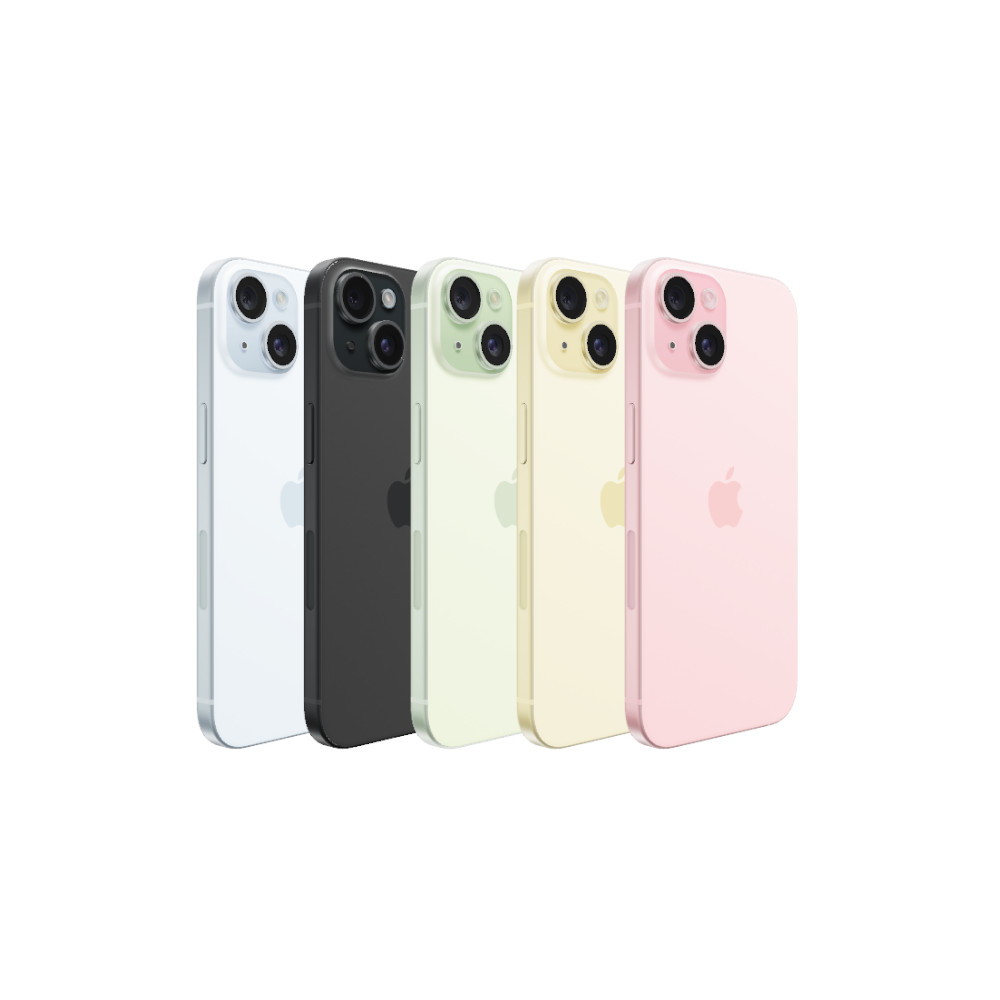Affiliate links on Android Authority may earn us a commission. Learn more.
Does the iPhone 15 keep up with the best Android alternatives?
On paper, there’s very little reason to get excited about Apple’s iPhone 15. It has a chipset we’ve seen before, a design that hasn’t changed in years, and cameras that cover the basics but don’t really reach for the stars. And yet, it’s probably going to be one of the most popular phones over the next 12 months. As a reviewer for Android Authority, I’ve spent plenty of time with the best of Android, but I’m also very familiar with what Apple has to offer on the iOS side. After all, you have to know what the competition is doing to know what you’re talking about. And I have a few ideas of why the iPhone’s popularity endures, so let’s look at how the iPhone 15 actually fares against its best Android rivals.
For our purposes, we’re only worried about the base iPhone 15 and iPhone 15 Plus, along with their similarly priced competitors launched at the time. That means we’ll look at the Samsung Galaxy S23, OnePlus 11, Google Pixel 8, and Motorola Edge Plus (2023) as our Android baseline and skip the Pro-grade models on both sides. You can check out our full thoughts on the iPhone 15 Pro here.
Update, January 2024: We’ve updated this iPhone 15 review with new alternatives.

Where the iPhone 15 keeps up with Android
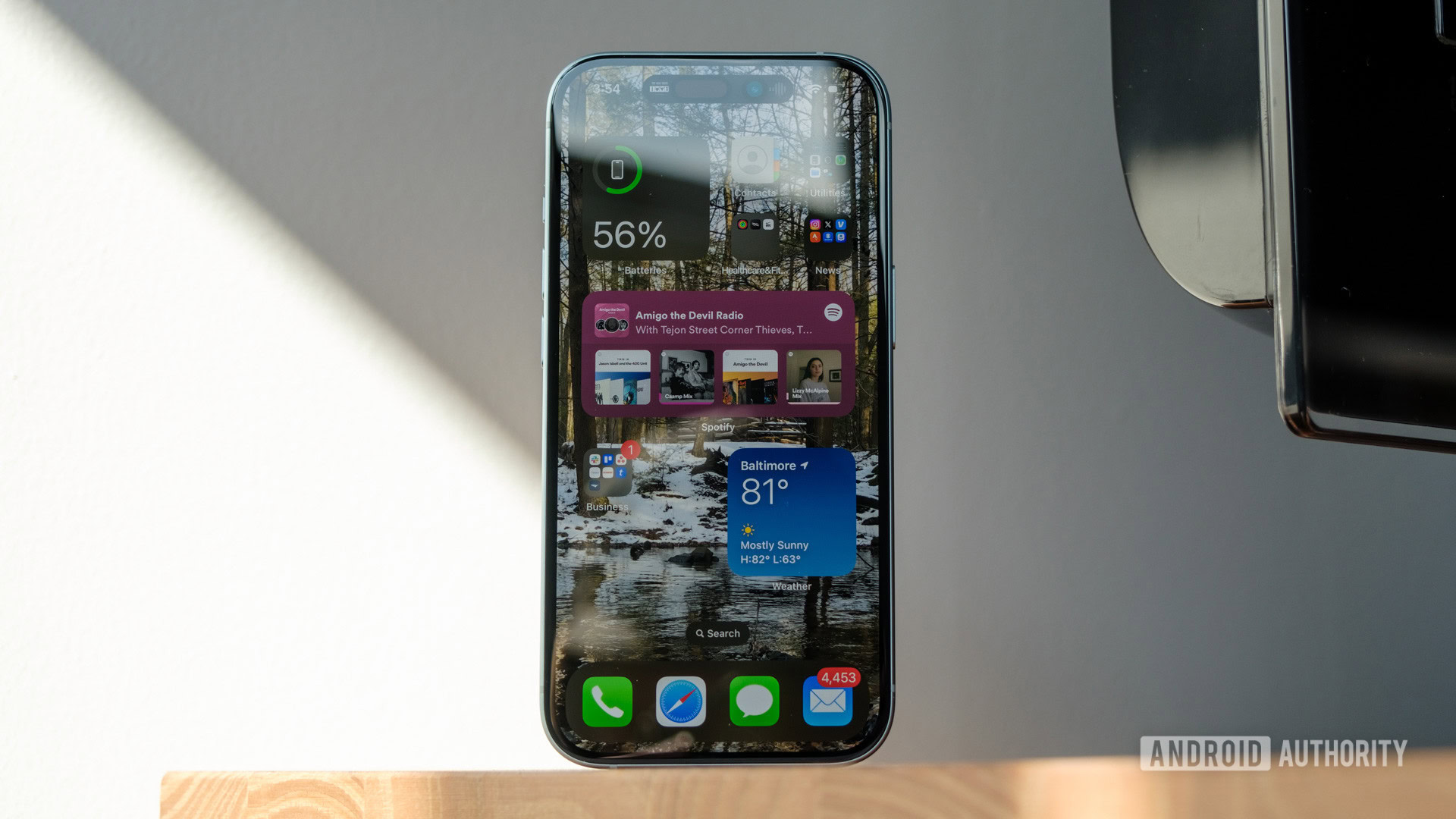
Up first, the success stories, and there are quite a few things that the iPhone 15 gets right. Most importantly, it delivers a reliable day-to-day experience. There’s also a bit of a theme to Apple’s strengths — many of its best features come from keeping the hardware and software development in-house. Here’s what I mean:
Performance
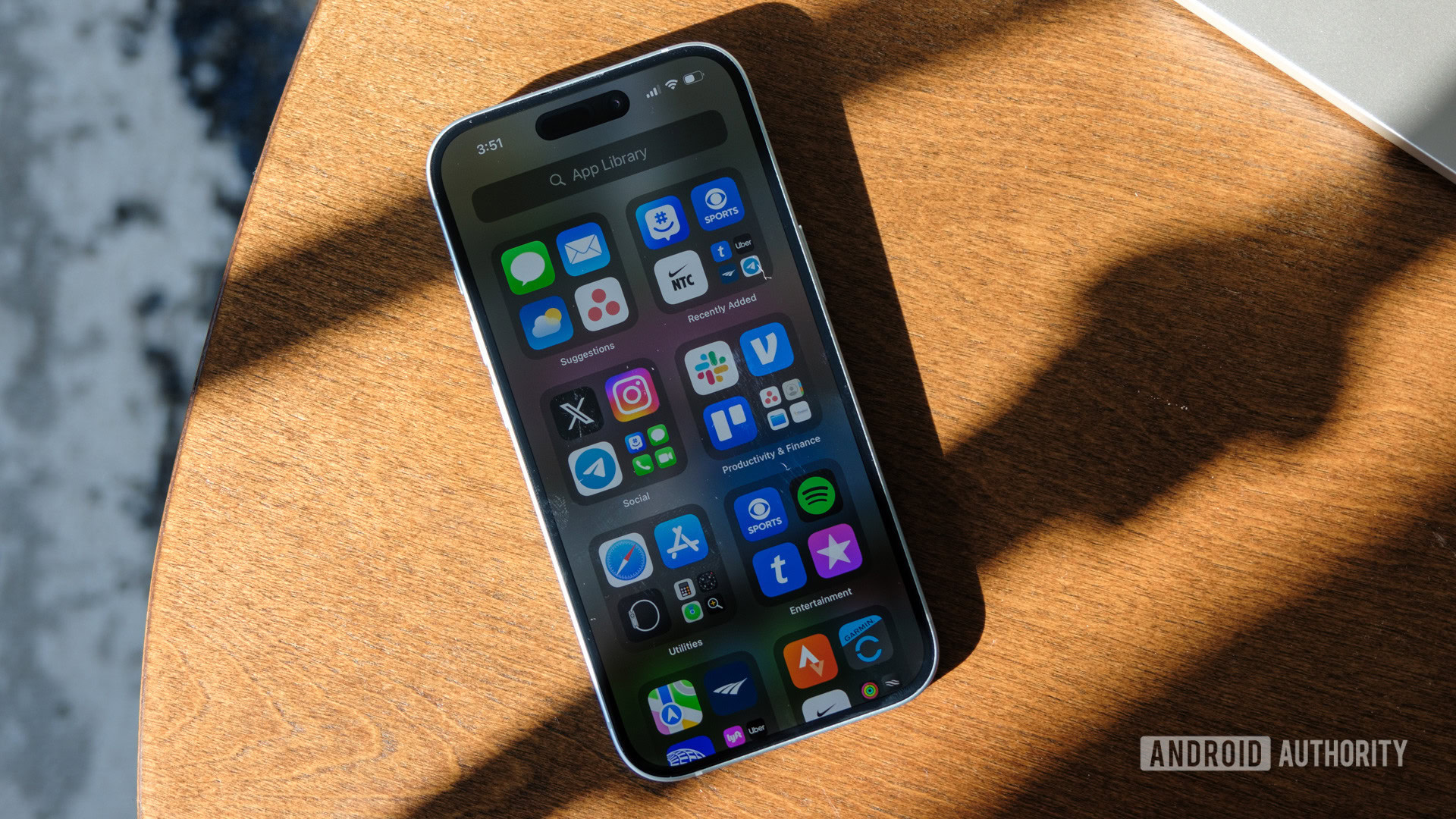
In a more traditional review, I’d probably bash the iPhone 15 for reusing the previous generation’s A16 Bionic processor. It’s still not our favorite decision, but that has more to do with Apple’s decision to stair-step its upgrades than the performance of the A16 Bionic itself. Honestly, when it comes right down to it, there’s nothing wrong with the iPhone 15 reusing an existing processor, especially when it’s still able to cruise through everyday tasks. Of course, if you want Apple’s latest and greatest processor, you’ll have to splash for the premium iPhone 15 Pro series.
I’ve spent much of the last year cycling through launches from Google, Samsung, and, yes, Apple, so I have a pretty good idea of how they perform in real life. If you were to ignore the spec sheets and choose a phone simply on the experience over a few days, the processor itself would be one of the last factors playing into your decision. As far as opening apps, jumping from one app to the next, and multitasking go, the iPhone 15 is right there with the Google Pixel 8, Galaxy S23, and OnePlus 11.
It may be a generation old, but Apple's A16 Bionic still turns in a respectable performance.
My smartphone usage is the same no matter which device is in my pocket, which makes it easier to pick out the differences from one to the next. I count on a solid mix of social media browsing, running Spotify and Google Maps through my car, and some light gaming in between, and the iPhone 15 has no problem with any of it — but neither do its Android rivals.
That is, perhaps, a boon for the iPhone, as it’s delivering a reliable experience while toting just 6GB of RAM compared to the 8GB on the Pixel 8 and Galaxy S23 or 12GB on the OnePlus 11. It lacks the really cutting-edge gaming performance of the iPhone 15 Pro, however, which is why you can’t play those new AAA releases on the vanilla iPhone 15.
Of course, it’s not just my real-life experience that tells me the iPhone 15 has the chops to keep up with its Android competitors. Two years of benchmarks on the A16 Bionic chipset are just as crucial to proving that performance goes beyond the latest and greatest. When put through our gauntlet of Geekbench 6 and 3DMark stress tests, the iPhone 15 is right there in the mix.
As seen in the graphs above, the A16 Bionic not only matches Google’s Tensor G3 and Qualcomm’s Snapdragon 8 Gen 2 in single and multi-core Geekbench 6 performance but exceeds them by a comfortable margin. It outduels the Pixel’s in-house chipset by more than 50% on both metrics and surpasses Samsung’s overclocked Snapdragon 8 Gen 2 for Galaxy by around 37%.
Apple’s graphics performance in the 3DMark Wild Life stress test offers another interesting look at the iPhone 15’s performance. While it doesn’t turn in the highest peak scores, the iPhone 15 is the most consistent of the bunch, with an 81% mark for stability.
Software updates and optimization
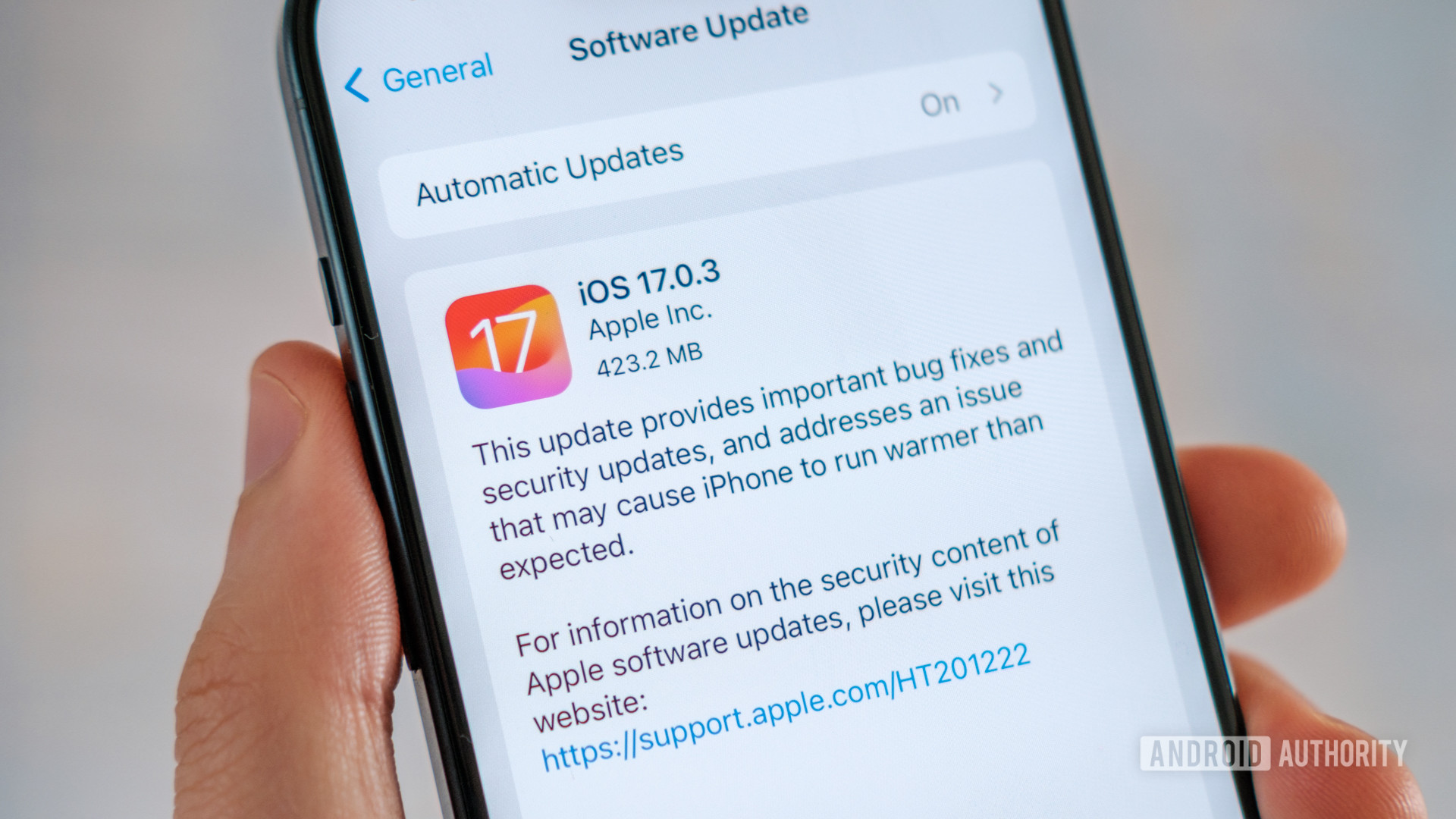
Now, the reason that the iPhone 15 can hand in such a strong performance above is that Apple has pretty much mastered the art of optimization. By controlling both the hardware and software development, there’s a level of uniformity to the iPhone experience that Android OEMs can’t quite match. Where Motorola and Samsung have to wait for Google to provide the bones of the next major software update, Apple’s developers can optimize as they go, ensuring that iOS feels the same on the iPhone XS as on the iPhone 15.
On top of that smooth performance, the iPhone 15 offers one of the best update policies around. Apple’s usual delivery of six to eight years of software updates has long set the gold standard among smartphones, with only the Samsung Galaxy S24 series and Pixel 8 series technically going one better by actually guaranteeing seven years of updates.
For comparison’s sake, here are the update commitments for some other Android flagships, listed from longest to shortest:
- Samsung Galaxy S23 series: Four major Android updates, five years of security patches
- OnePlus 11: Four major Android updates, five years of security patches
- Motorola Edge Plus (2023): Three major Android updates, four years of security patches
Of those Android OEMs, only Google and Samsung have begun their Android 14 rollouts, with OnePlus and Motorola still waiting patiently on Android 13. My iPhone 15, on the other hand, arrived with iOS 17 right out of the box, and several of our older iPhones picked up their own updates shortly after.
Where the iPhone 15 falls behind Android
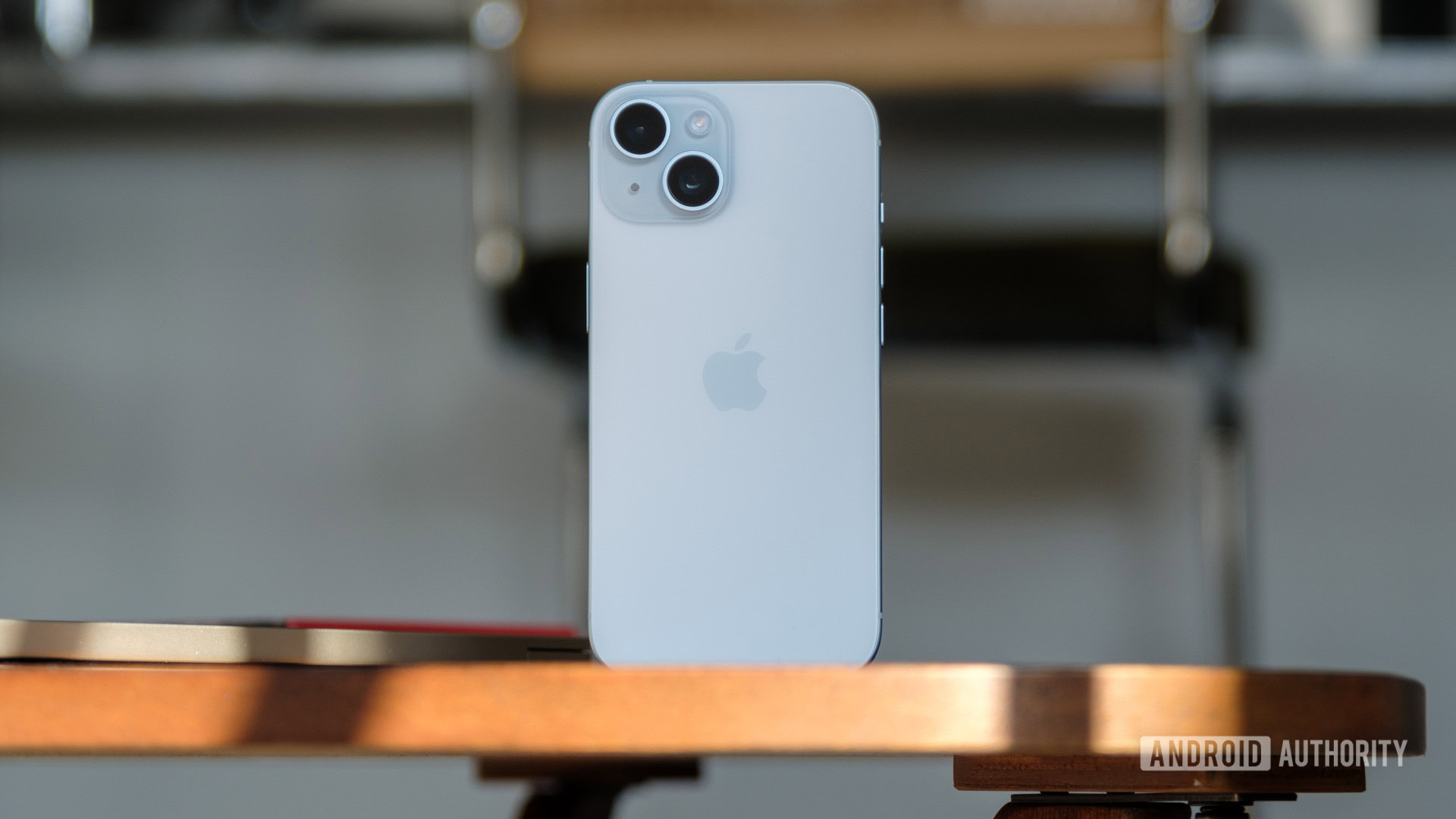
Now, for some good-natured Apple bashing. Although the house wins far more than it loses, in Apple’s case, it seems to lose in the same ways over and over again. The issues both I and the rest of the Android Authority testers have had with previous iPhones are still problems with the iPhone 15, and it doesn’t seem like Apple is in a rush to fix them. So, forgive me for sounding like a broken record at times over the next few paragraphs while comparing the iPhone 15 to its best alternatives.
Camera flexibility
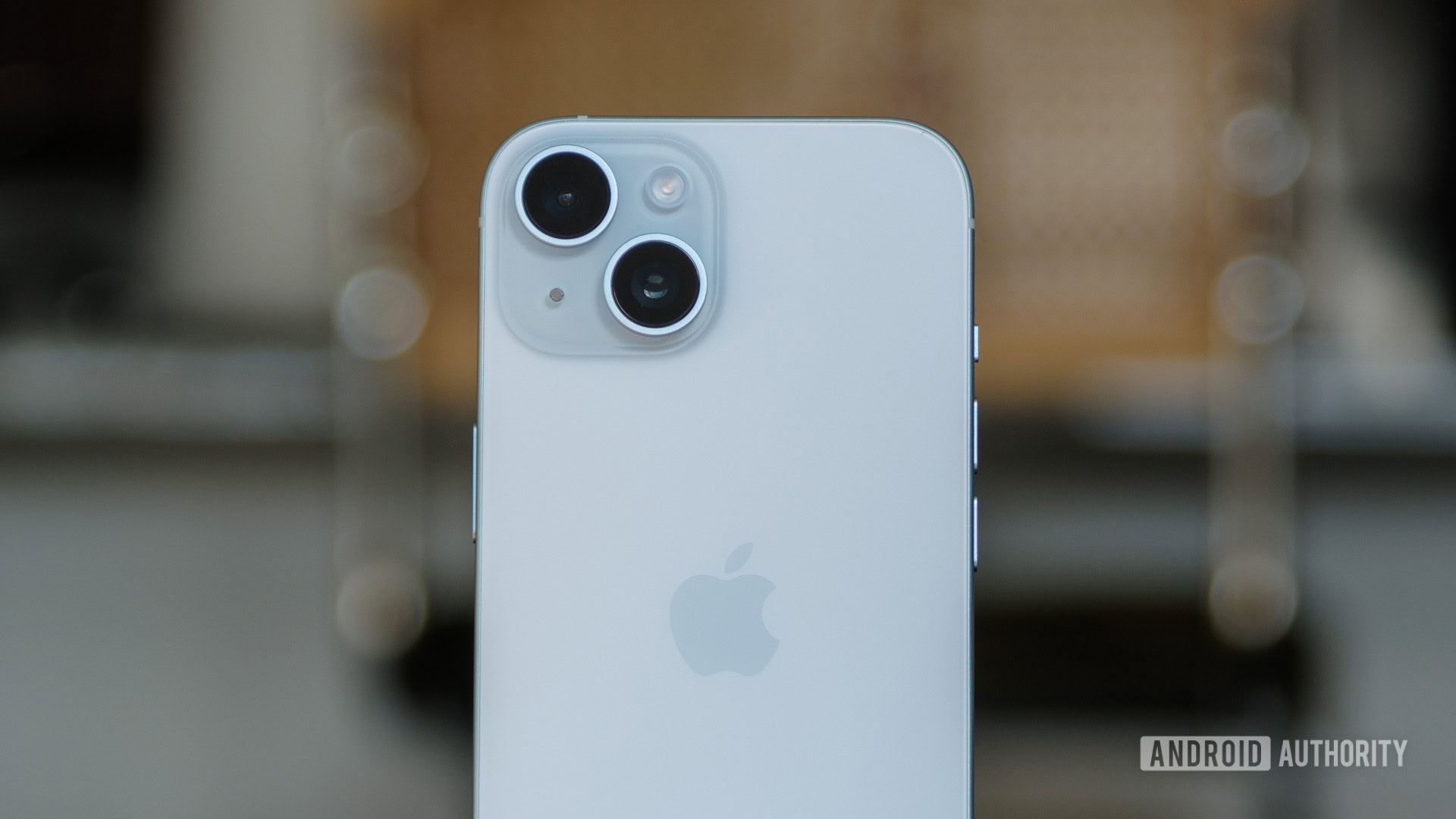
Several factors go into creating a well-rounded smartphone camera experience, but let’s face it — the iPhone 15 is sorely limited when compared to the best Android camera phones. Its wide and ultrawide setup hasn’t really changed too much since Apple first introduced a second rear camera on the iPhone X. Yes, the iPhone 15 now supports digital zoom up to 10x, and the sensors themselves are much larger, but it still comes up short compared to still photography on Android phones.
Before we get too far into how the iPhone 15’s cameras compare to its Android alternatives, take a quick look at the galleries below. I tested the iPhone against the Pixel 8, Galaxy S23, and Motorola Edge Plus (2023) to get an idea of their zoom capabilities. Further, the four phones show the same scene in the same lighting, making it easier to compare clarity and processing across the best of Android and iOS.
Apple iPhone 15
Google Pixel 8
Samsung Galaxy S23
Motorola Edge Plus
On top of offering a look at the iPhone’s overall zoom flexibility, the quick test above also shows how each camera tackles processing after you press the shutter. The iPhone 15’s 5x and 10x images have a noticeable yellow tone, while the Tensor G3-powered Pixel 8 offers a more natural color profile. Both the Galaxy S23 and Motorola Edge Plus follow the Pixel’s lead with more realistic colors, though the Galaxy still adds a bit of punch to the person wearing red pants at 2x zoom.
As far as zoom quality goes, the Galaxy S23 easily comes out on top. It not only punches in the farthest at up to 30x zoom but offers the best clarity and colors at 10x zoom — the iPhone’s maximum length. If you look closely at the iPhone or Pixel shots at full zoom, the details have gone soft, and there’s some noticeable halation of the white text in the iPhone image. Samsung, on the other hand, doesn’t pick up halation until 20x zoom, but even then, it preserves better details in the water of the harbor.
Where Apple does have an advantage, of course, is videography. Though Android phones are gradually improving on this front, the iPhone is still the best pick for grabbing quality clips.
Charging
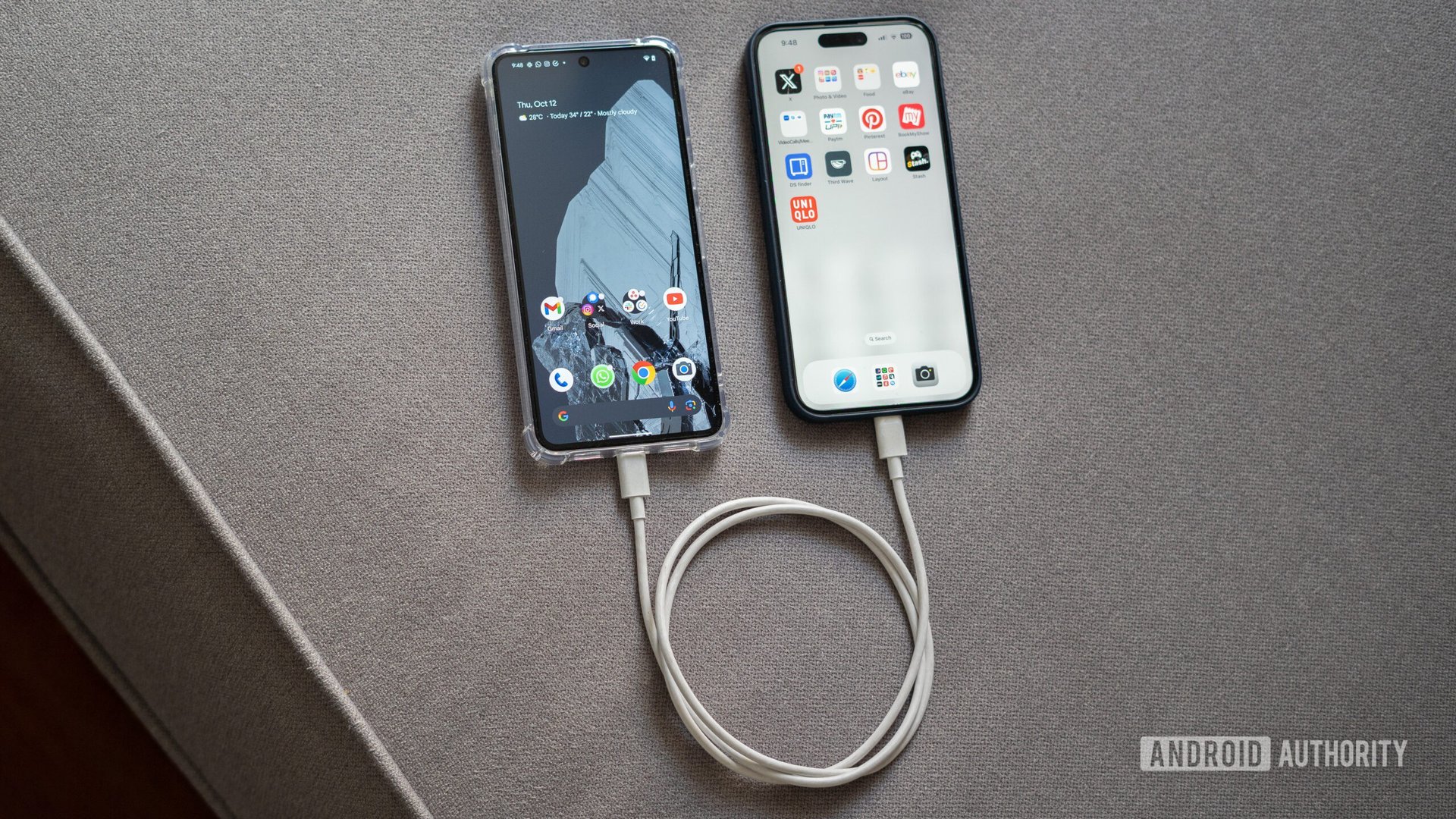
Now that the iPhone 15 matches its Android competitors after ditching its Lightning port, it must have picked up faster charging, right? Well, no. Instead, filling the relatively small ~3,300mAh battery is the slow, steady process it’s always been. Granted, the smaller battery means that the iPhone 15 fills in a similar time to its Android competitors, but Apple could have hung its hat on a short charging session if it had bothered to push the iPhone 15 beyond 20W wired speeds.
If you’re not into wired charging, the iPhone 15 also supports 15W MagSafe and 7.5W Qi wireless charging, both of which take even longer than the lowly wired speeds. Should you decide that charging speed is one of your top priorities, you’ll have to grab Apple’s iPhone 15 Pro or Pro Max with their 27W maximum speeds.
Apple’s lowly charging standards look even worse once you stack them against comparable Android devices. I had to plug in the iPhone 15, Pixel 8, Galaxy S23, and Motorola Edge Plus to perform the camera test detailed above, and it gave me a real-time impression of just how slowly the iPhone charges. I also have data from our original OnePlus 11 review to show just how fast charging can be.
Apple could charge the iPhone 15 faster than its Android rivals — it just doesn't want to.
Despite Apple’s boasting of a 50% charge in just 30 minutes, the iPhone takes nearly an hour and a half to reach a full battery. It’s not a great mark, given the small cell, and it only gets worse when you introduce Android into the conversation. The Galaxy S23 and Pixel 8 are only marginally faster, taking 80 minutes and 75 minutes to fill their 3,900mAh and 4,575mAh cells, respectively. Though don’t forget — you’ll need a USB PD PPS charger to hit the top speeds on the Galaxy S23 or Pixel 8.
Then, there’s Motorola and OnePlus. The Edge Plus and OnePlus 11 are on a different tier entirely, with the former supporting 68W wired charging and the latter opting for 80W wired speeds (in the US) — even if it skips wireless charging. Either way, the result is a lightning-fast charge. We filled the OnePlus 11 and its 5,000mAh battery from empty to full using the included proprietary SuperVOOC charger in just 30 minutes, while Motorola’s TurboPower block juiced the Edge Plus’ 5,100mAh capacity in about 50 minutes.
Design
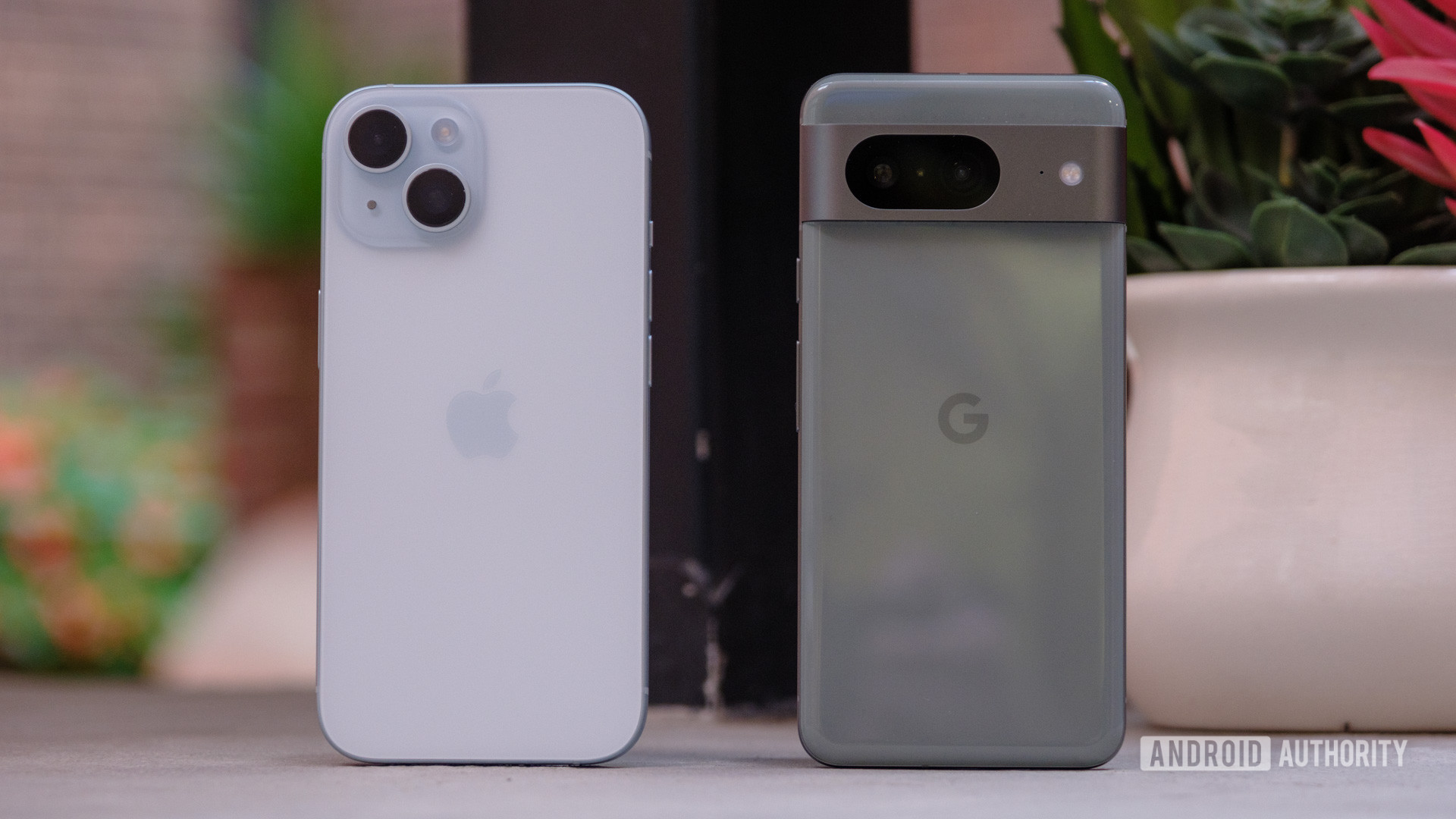
The final knock against the iPhone 15 is that it’s, well, boring. If you’ve seen the iPhone 13, you’ve seen 90% of the iPhone 15 — just swap the notch for a Dynamic Island and shift the cameras diagonally. It’s durable, offering an IP68 rating and an aluminum frame, but we’ve seen both qualities on an iPhone before. Apple made a few tweaks that will excite current iPhone users, like swapping the glossy back for a frosted one and softening the edges where you hold the phone, but neither tweak is enough to entice Android users who are currently spoilt for choice.
Put simply, Android offers tons of variety — in hardware and software — while every iPhone 15 feels just about the same. You can close your eyes and feel your way to the alert switch, USB-C port, and camera bump and immediately know you’re holding an iPhone. On Android, however, you have the freedom to choose from several unique devices. Google’s Pixel 8 offers a unique camera bar and colorful combinations of glass and aluminum. Samsung’s Galaxy S23 series is sleek and minimal, offering a pocket-friendly 6.1-inch display on the smallest model. It’s also worth remembering that this is a 60Hz panel on the iPhone 15, whereas Android phones at this price point almost always have 90Hz or 120Hz displays for more fluid animations in apps and menus. The iPhone 15 isn’t sluggish at all, but it can look like it is.
The old tagline “Be together, not the same” runs through my mind at least once per week when reviewing Android flagships — call it my Roman Empire, if you will — but it’s true. OnePlus offers a unique, massive, circular camera bump on its OnePlus 11, paired with a green finish that’s become the company’s signature, and even Motorola has grown into an exciting new design phase. The Edge Plus (2023) looks completely different from the last few Edge designs, sporting a textured black back and a sweeping quad-curved display. Maybe I’m too easily bored, but I’d rather have the variety of Android than the reliability of an iPhone I can use with my eyes closed.
Apple iPhone 15 specs
| iPhone 15 | iPhone 15 Plus | |
|---|---|---|
Display | iPhone 15 6.1-inch OLED 60Hz display refresh rate Dynamic Island HDR and HDR10 Dolby Vision | iPhone 15 Plus 6.7-inch OLED 60Hz display refresh rate Dynamic Island HDR and HDR10 Dolby Vision |
Processor | iPhone 15 A16 Bionic | iPhone 15 Plus A16 Bionic |
Storage | iPhone 15 128, 256, or 512GB | iPhone 15 Plus 128, 256, or 512GB |
Power | iPhone 15 20W wired charging No charger in box 15W wireless charging with MagSafe | iPhone 15 Plus 20W wired charging No charger in box 15W wireless charging with MagSafe |
Cameras | iPhone 15 REAR: - 48MP wide primary (26mm, ƒ/1.6, 2µm, OIS) - 12MP ultrawide (13mm, ƒ/2.4, 120-degree FoV) FRONT: - 12 MP wide (23mm, ƒ/1.9) | iPhone 15 Plus REAR: - 48MP wide primary (26mm, ƒ/1.6, 2µm, OIS) - 12MP ultrawide (13mm, ƒ/2.4, 120-degree FoV) FRONT: - 12 MP wide (23mm, ƒ/1.9) |
Battery | iPhone 15 3,349mAh | iPhone 15 Plus 4,383mAh |
Video | iPhone 15 4K video (24, 25, 30, or 60fps) 1080p video (25, 30, or 60fps) Slo-mo at 1080p (120 or 240fps) | iPhone 15 Plus 4K video (24, 25, 30, or 60fps) 1080p video (25, 30, or 60fps) Slo-mo at 1080p (120 or 240fps) |
Connectivity | iPhone 15 Dual-eSIM (no physical SIM in US) Qualcomm X70 modem Wi-Fi 6 5G (Sub6 and mmWave in US) Bluetooth 5.3 NFC UWB | iPhone 15 Plus Dual-eSIM (no physical SIM in US) Qualcomm X70 modem Wi-Fi 6 5G (Sub6 and mmWave in US) Bluetooth 5.3 NFC UWB |
Ports | iPhone 15 USB-C No SIM card tray in US and select countries No 3.5mm headphone jack | iPhone 15 Plus USB-C No SIM card tray in US and select countries No 3.5mm headphone jack |
Security and durability | iPhone 15 Face ID IP68 rating | iPhone 15 Plus Face ID IP68 rating |
Software | iPhone 15 iOS 17 | iPhone 15 Plus iOS 17 |
Dimensions and weight | iPhone 15 147.6 x 71.6 x 7.8mm 171g | iPhone 15 Plus 160.9 x 77.8 x 7.8mm 201g |
Colors | iPhone 15 Pink, black, green, blue, and yellow | iPhone 15 Plus Pink, black, green, blue, and yellow |
In-Box contents | iPhone 15 iPhone 15 USB-C to USB-C cable Paperwork | iPhone 15 Plus iPhone 15 Plus USB-C to USB-C cable Paperwork |
So, why buy an iPhone 15?

At the end of the day, pitting the iPhone 15 against the best of Android is a new chapter in a familiar story. Like a police procedural on TV, you can just about guess the ending after you start. The iPhone 15 turns an underwhelming spec sheet into a solid day-to-day performance and pairs it with a rock-solid ecosystem that draws you in and keeps you there. Apple’s base flagship is safe and comfortable, offering everything you expect from an iPhone, exactly where you want it to be. Add reliable updates that will outlast most Android flagships, and it’s easy to see why people dip back into the well when it’s time to replace their old iPhones.
The iPhone 15 is the picture of reliability, while Android flagships offer far more variety and excitement.
However, it continues to come up short against the flexibility and variety of Android in the same predictable ways. There’s not much to get excited about from one iPhone to the next, with limited camera flexibility, slow charging, and a design that’s been around the block more times than an Uber in New York City.
It becomes even easier to pick an Android flagship over the iPhone 15 if you nail down a specific feature you’re after. The Google Pixel 8 ($699 at Amazon), for example, is a go-t0 for excellent Tensor G3-powered image processing and long-term updates. It offers the closest experience to the iPhone, with a relatively small display and two rear cameras, but incorporates Google Assistant into every nook and cranny.
The Galaxy S24 ($859.99 at Amazon is Samsung’s latest hotness, bringing a taste of the future with its Galaxy AI smarts. Hardware-wise, it’s packing a snappy Snapdragon 8 Gen 3 for Galaxy SoC, a slightly bigger display, and a larger battery than its predecessor. It retains that stellar camera setup that made the Galaxy S23 among our favorite devices of 2023. Best of all, it should still receive Android updates through 2031, making it one of the more future-proofed devices available today.
While now a little older, the Galaxy S23 ($799 at Amazon) is still well worth considering. It boasts a similar camera setup to its newer sibling, which remains among the best in the Android world. It has the smallest battery among our Android alternatives but pairs it with an overclocked Snapdragon 8 Gen 2 for Galaxy processor that stretches the cell to impressive lengths. Now that the Galaxy S24 is available, you could easily find this model for a lot less.
Both the Motorola Edge Plus ($699 at Amazon) and OnePlus 11 ($1296 at Amazon) are solid alternatives to the iPhone 15, too, especially if you want to get the most raw specs for your money. They offer the biggest batteries (5,000mAh and 5,100mAh, respectively), the fastest charging, and the largest displays, all for roughly the same price as Apple’s smallest flagship. Neither the Edge Plus nor the OnePlus 11 can keep up in terms of update longevity or frequency, but they’re both prime examples of what made Motorola and OnePlus popular in the first place.

Top-tier build quality
USB-C port, finally!
Apple iPhone 15 review: FAQs
Yes, the iPhone 15 switched from Apple’s Lightning port to a USB-C port for charging and data transfer.
While not technically waterproof, the iPhone 15 has an IP68 rating against water and dust, meaning that it can be submerged for up to 30 minutes.
No, at least not in the US. All iPhone 15 models sold in the United States are eSIM-only, while international models do have a single nano-SIM slot.
Although the iPhone 14 and iPhone 15 share many similarities, there are slight size differences, meaning that previous cases will not fit perfectly.
